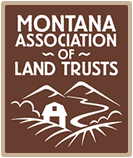Montana’s western forests face many threats, and among those threats is residential development on large tracts of privately held forestlands. An impressive Oct. 7 article in the Flathead Beacon—which includes perspectives from The Trust for Public Land, Stimson Lumber Company, Green Diamond Resource Company and Montana Fish, Wildlife & Parks—documents the threats of development as well as the programs and cooperation needed to keep western Montana forestlands intact and producing wood products, maintaining public access and protecting wildlife habitat.
The article also points out additional funding for forestland conservation is in the much-debated reconciliation bill now before Congress.
Three quotes from the article:
“There’s no program in the history of fish and wildlife conservation in Montana that comes close to the Forest Legacy Program in terms of the impact it’s had on maintaining a working landscape, maintaining public recreation access, and protecting critical fish and wildlife connectivity,”said Jim Williams, regional supervisor for Montana Fish, Wildlife and Parks in northwest Montana. “And we have been fortunate to work with willing timber companies as well as extremely knowledgeable land trust organizations that are the foremost experts on these partnerships.”
“There’s a saying that there are two income streams from forestry—income for today and value for tomorrow,” Neil Ewald, Green Diamond’s senior vice president and chief operating officer, said. “Well, we’re not desperate for income today. We don’t have any big notes to pay off. But we think we can maximize the value for the future.”
“These companies are being partially paid and they are partially donating the development rights of their timberland so they can move forward and say, ‘We don’t want the distraction of these unsolicited offers from developers.’ That’s critical. It’s because of those decisions that we are able to keep these working forests on the landscape, keep development pressures at bay and continue to allow public access,” said Chris Deming, senior project manager at The Trust for Public Land.

